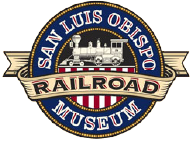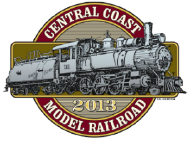Velocipede Hand-Car
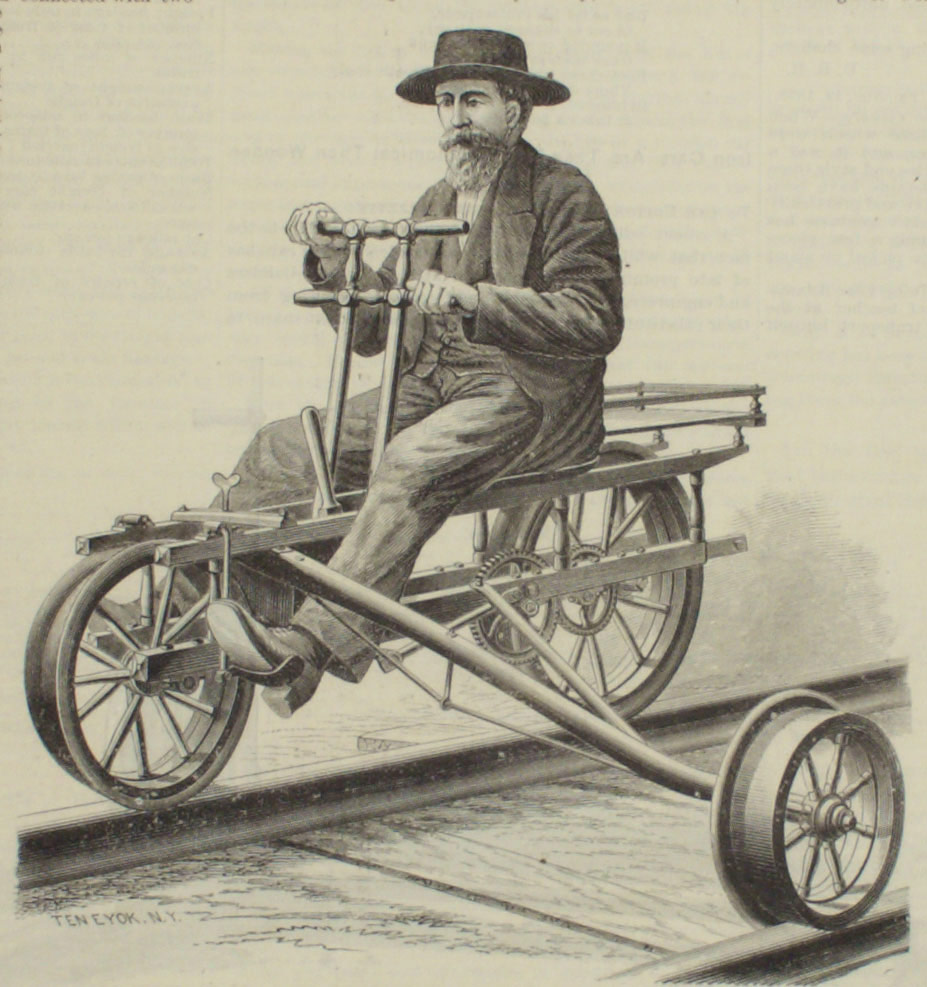
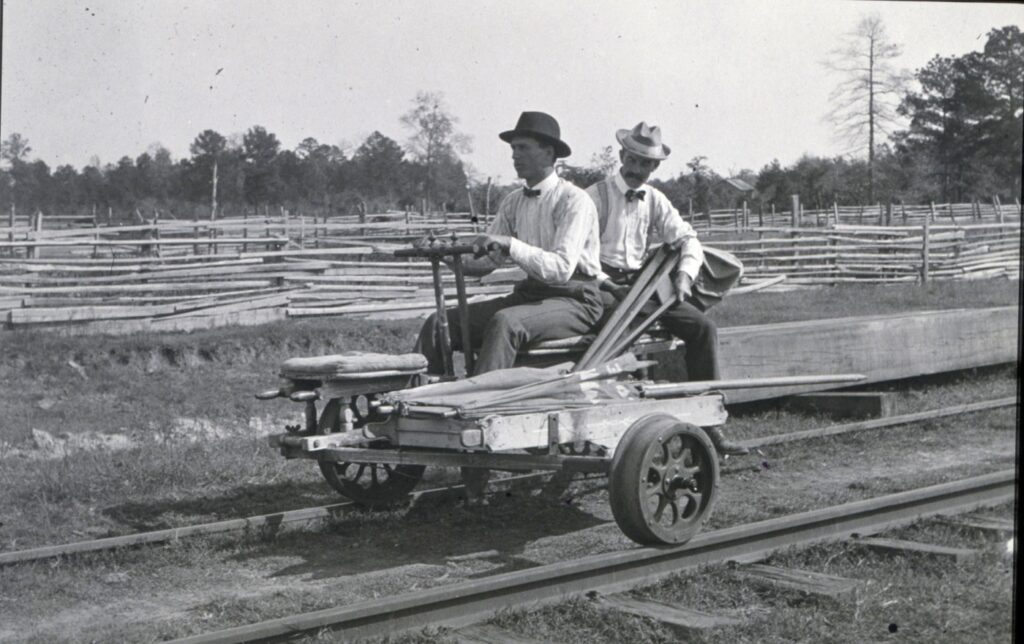
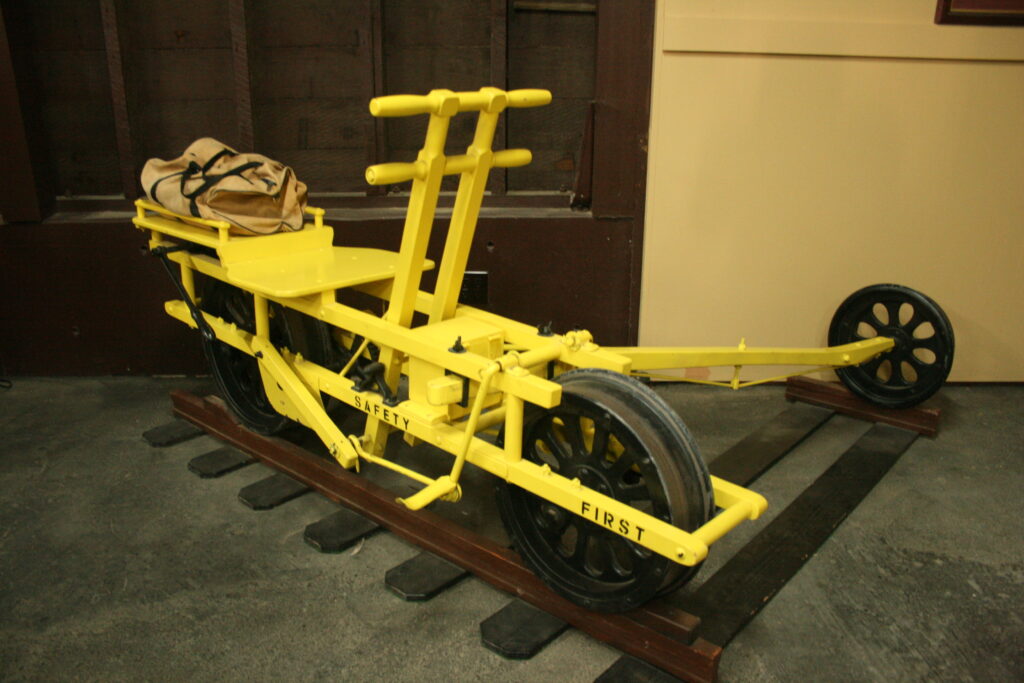
Purpose: To provide transportation for railroad workers to and from work sites between the 1880’s and the 1950’s. These were ideal for individual workers such as Road Masters, Bridge Inspectors, Telegraph Line Repairers, Signal Maintainers, and Track Inspectors, or any worker who needed to go over the line at will.
Last Used: This particular handcar was owned by Southern Pacific Railroad and used locally in San Luis Obispo on Southern Pacific rails in the early turn of the century.
Builder: Sheffield Car Company of Three Rivers, Michigan
Year Built: Estimated to have been constructed circa 1890’s.
Restoration: Phil Gould, a member of the San Luis Obispo Railroad Museum, has lovingly restored this velocipede from its original condition over the course of six to eight months. We thank both Phil and Vera, his wife, for their outstanding effort in reconstructing this historic rail vehicle.
History: In 1877, George Sheffield invented the Sheffield Velocipede handcar, a 140 lb. wood and iron rail bicycle with a third wheel for balance. It is manually powered by both hand and foot levers. He soon formed the Sheffield Velocipede Car Company (eventually becoming the Sheffield Car Company) and produced about 4,000 cars. In 1888, the Fairbanks, Morse & Company bought into the Sheffield Car Company and eventually eliminated the Sheffield name.
Compared to the typical railroad section hand car, velocipedes survived in greater numbers for a much longer period of time due to their simplistic, lightweight design. A single worker could quickly place the car onto the track and ride to the end of a siding to align a switch for an approaching train. Modernization efforts in the 1970’s led to the closing of most stations, leading to the demise of the velocipede.
Early History: George Sheffield lived on a farm near Three Rivers, Michigan. The farm was a short distance from the Michigan Central Railroad. Every morning and evening, George walked the track to and from his place of employment in Three Rivers. In 1877, he conceived the idea of building a small three wheeled vehicle (formally called a Velocipede).
George Sheffield and his hand car had no right to use the railroad tracks, so he made his journey each day in darkness. One night, he has headed home from work and discovered a broken rail. By procuring a lantern and flagging down a train, he prevented a certain disaster and the saving of many lives. Although the railroad company did not like Sheffield using the railroad track, it recognized his heroic act and permitted him to run his hand car between his farm and Three Rivers. Shortly after this incident, the railroad company asked Sheffield to build a hand car for the railroad to use.
Video: Watch a Velocipede in action at the Pacific Southwest Railway Museum: click here.
FOR FURTHER INFORMATION
https://en.wikipedia.org/wiki/Velocipede
https://fvhrs.org/the-velocipede
https://www.kshs.org/kansapedia/velocipede/10267
https://www.midcontinent.org/rollingstock/builders/sheffield.htm
https://www.jstor.org/stable/3103532
http://www.catskillarchive.com/rrextra/odveloc1.html
http://www.whippanyrailwaymuseum.net/exhibits/equipment/rail-equipment/our-handcars
